Faculty and Labs
Laboratories in the Department of Physiology are vibrant facilities where researchers seek to expand the boundaries of medical understanding and open the doors to breakthrough discoveries.
Look below to learn about our faculty members’ research interests and take a peek at what’s going on in their labs.
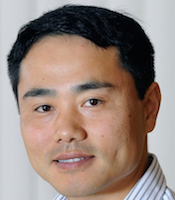
Duojia (DJ) Pan, Ph.D.
Professor
HHMI Investigator
Fouad A. and Val Imm Bashour Distinguished Chair in Physiology
Chair, Department of Physiology
Research Interests: Size-control mechanisms in normal development and their pathological roles in cancer
Pan Lab
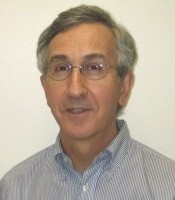
George N. DeMartino
Professor
Robert W. Lackey Professorship in Physiology
Dr. DeMartino studies how proteins are degraded in cells by a unique ubiquitin-proteasome system. Intracellular protein degradation determines most basic cell functions by controlling the amounts of critical proteins, and becomes dysregulated in many human diseases including cancer, muscle-wasting diseases such as Muscular Dystrophy, and neurological diseases such as Parkinson’s disease and Alzheimer’s disease.
Based on our work, drugs against the proteasome are now used to treat cancers such as multiple myeloma.
DeMartino Lab
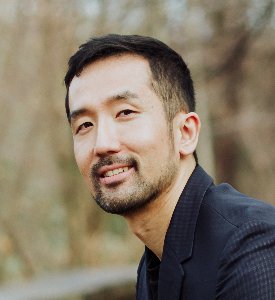
Daisuke Hattori, Ph.D.
Assistant Professor
The Hattori lab studies how neural circuits integrate sensorimotor information, memory, and internal state to guide behavior. We use Drosophila as a primary model and employ a multidisciplinary approach that encompasses molecular genetics, neural recording, and behavioral experiments in order to uncover neural mechanisms that provide animals with behavioral flexibility.

Don Hilgemann, Ph.D.
Professor
Roy and Christine Sturgis Chair in Biomedical Research
Dr. Hilgemann studies how transport proteins in membranes move ions (salts) that control electrical events for heart contraction and secretion by the kidney and pancreas. He developed a “patch clamp” electrophysiological method to excise “giant” membrane patches to study very fast changes (microsecond) in transport proteins.
This remarkable method is extended to study how two membranes fuse with each other to analyze what brings proteins into and out of a membrane. With these novel and sensitive techniques he is studying how different lipid molecules serve as signals to regulate the functions and positions of membrane proteins. These research projects are fundamental to understand numerous diseases that affect electrical signaling and secretion
Hilgemann Lab
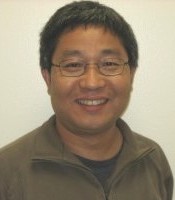
Youxing Jiang, Ph.D.
Professor
HHMI Investigator
Rosewood Corporation Chair in Biomedical Science
Dr. Jiang studies how ion (salt) channel proteins control the flow of ions such as K+, Na+, or Ca2+ across the cell membrane and regulate many biological processes, such as the excitation of nerve and muscle cells, the secretion of hormones, and sensory transduction. There are two basic properties that define an ion channel: ion selectivity (what ions move through the channel) and gating (how fast ions move through the channel).
His study aims to decipher the molecular mechanisms of both selectivity and gating properties of channels using X-ray crystallography to visualize the atomic structure and relate this to a channel’s electrophysiological properties. Because of the prevalence and importance of ion channels in the human body, knowing their structures and functions helps understanding the underlying mechanisms of channel-related human pathologies.
Jiang Lab

Jen Liou, Ph.D.
Associate Professor
Dr. Liou’s research aims to elucidate molecular mechanisms of cell signaling involving inter-organelle communication. Her laboratory has pioneered synthetic-biology, chemical-genetics and live-cell imaging techniques to study the functions and regulation of nanosized inter-organelle membrane contact sites. Inter-organelle communication is important for cell homeostasis and responses to stimulation. Many diseases have been associated with defective inter-organelle communication including severe combined immunodeficiency, muscular disorders, and cancer. Dr. Liou’s research has had strong impact on biomedical research and holds promise for therapeutic applications.
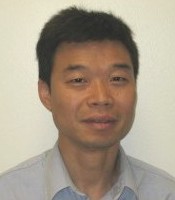
Yi Liu, Ph.D.
Professor
Chair, Integrative Biology Graduate Program
Nancy B. and Jake L. Hamon Distinguished Chair in Basic Cancer Research
Dr. Liu studies how daily biological clocks function. The importance of biological clocks in human physiology and mental health is evident from their ubiquitous influence on a wide range of cellular and organismal processes, including sleep/wake and body temperature cycles, endocrine functions, drug tolerance and resistance, and the phenomenon of jet lag. He uses a combination of molecular, biochemical, genetic, and physiological approaches to understand how cells generate the daily rhythmicity, how it is regulated by the environment, and how it controls diverse physiological activities.
Liu Lab
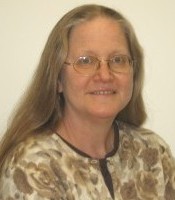
Joyce Repa, Ph.D.
Associate Professor
Secondary Appointment: Internal Medicine–Division of Endocrinology and Metabolism
Dr. Repa studies the role of orphan receptors that function in the nucleus of a cell to affect lipid and carbohydrate metabolism. The retinoid X receptors (RXRs) and liver X receptors (LXRs) regulate cholesterol absorption and have an impact on the development of atherosclerosis. In another project, the LXRs alter insulin secretion from islets of the endocrine pancreas, thus playing a potential role in the development and/or therapy of type 2 diabetes.

Matthew Sieber, Ph.D.
Assistant Professor
Life, as we know it, is a dynamic network of metabolic reactions that take nutrients from the environment and convert them into the building blocks and energy that cells need to grow and function. Each cell has a unique set of biosynthetic and energetic demands that must be met to ensure normal homeostasis. As a result, cells must establish distinct metabolic states to meet those demands. Disruption of these mechanisms can lead to severe developmental disorders and promote the progression of diseases such as cancer, neurodegeneration, and reproductive disorders. Our primary goal in the lab is to understand the dynamic changes in metabolic programs that support developmental and disease progression. Using a combination of genetics, molecular biology, and system based approaches (metabolomics, proteomics, and transcriptomics), we are investigating metabolic mechanisms that support reproduction and development in Drosophila and mammalian tissues. Our work focuses on three key areas:
- Defining the metabolic mechanisms that underlie cellular quiescence and reactivation
- Examining how dynamic changes in the mitochondrial metabolism support growth and differentiation
- Examining how changes in metabolism and dietary nutrients influence the regulation of conserved pathways that control development and disease progression
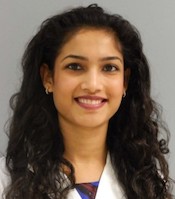
Anju Sreelatha, Ph.D.
Assistant Professor
Dr. Sreelatha studies the molecular mechanisms of selenoproteins in health and disease. Selenoproteins are a unique family of proteins that incorporate the micronutrient selenium in the form of the 21st genetically encoded amino acid, selenocysteine. Selenoproteins are found in all three domains of life highlighting their evolutionary prevalence and significance. The human selenoproteome consists of 25 human selenoproteins whose functions remain largely enigmatic. Importantly, several human selenoproteins are implicated in various pathophysiologies including cancer, cardiovascular and neurological disorders. Her research aims to determine the biochemical activity and physiological relevance of selenoproteins.
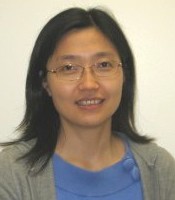
Jiang Wu, Ph.D.
Associate Professor
Dr. Wu’s research focuses on how chromatin states and chromatin remodelers regulate gene expression in response to signals during stem cell differentiation, tissue development, and tumorigenesis. Using the mammalian developing brain as a model system, she combines the current genomic and proteomic techniques, as well as the classic molecular biology, biochemistry, and genetic approaches to investigate the epigenetic mechanisms regulating transcription outcomes of signaling pathways. Her study provides another level of regulation and potential therapeutic targets for a number of developmental brain diseases such as autism and pediatric medulloblastoma.
Wu Lab
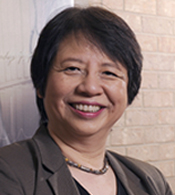
Helen Yin, Ph.D.
Professor
Dr. Yin studies how membrane lipids, PI4P and PIP2, regulate essential membrane functions that are critical to conveying signals for cell growth, cytoskeletal regulation, and response to cell injury. Derangement of these PI4P- and PIP2-regulated membrane functions leads to inappropriate cell growth, intracellular signaling, cytoskeletal remodeling, response to oxidative injury and autophagy. Her studies have relevance for cancer development, neuronal regeneration, and responses to inflammatory injuries.
Yin Lab
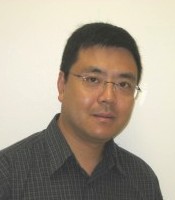
Chengcheng (Alec) Zhang, Ph.D.
Professor
Hortense L. and Morton H. Sanger Professorship in Oncology
Dr. Zhang is interested in cell-surface receptors, how the extrinsic cues regulate the cell fates of adult stem cells and cancer stem cells, and applying the knowledge obtained from these studies to the development of novel cell, gene, and immune therapies for treating cancer and other diseases. His studies are focused on blood stem cells and leukemia stem cells, and the interplay among stem cells, cancer, and immunity.
Zhang Lab
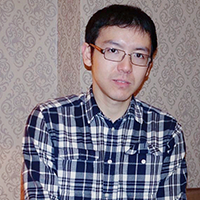
Xing Zeng, Ph.D.
Assistant Professor
Rita C. and William P. Clements, Jr. Scholar in Medical Research
Dr. Zhang is interested in understanding at the mechanistic level key questions lying at the interface between biochemistry, cell biology, metabolic and neural physiology. His research is focused on Bi-directional communication between neurons and adipocytes; Lipid droplet; Regulatory pathway of thermogenic program in adipocytes.
Xing Zeng Lab
Search for details about any of UTSW’s faculty – by name, by department/division and/or by research interest – in the Faculty Directory.
